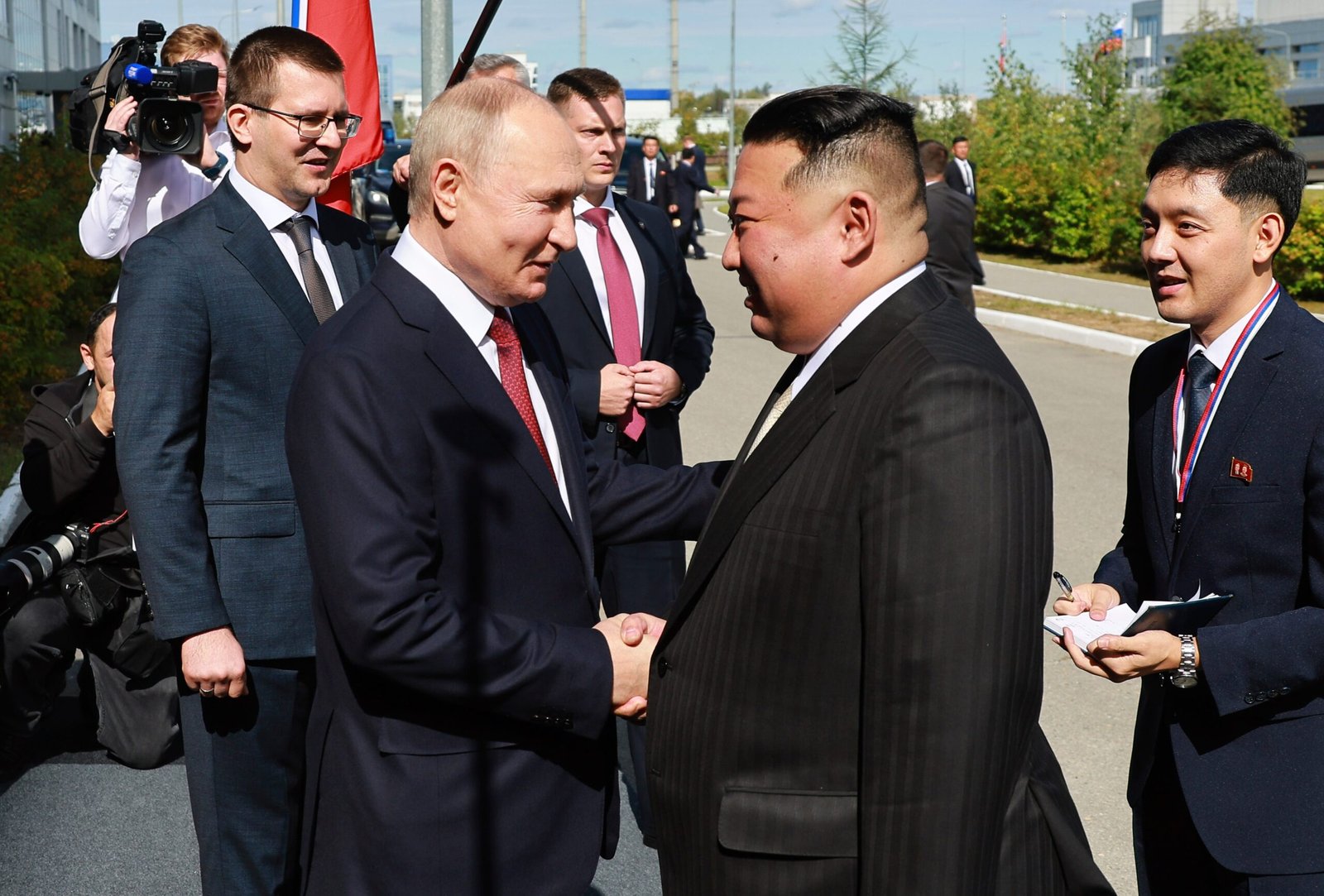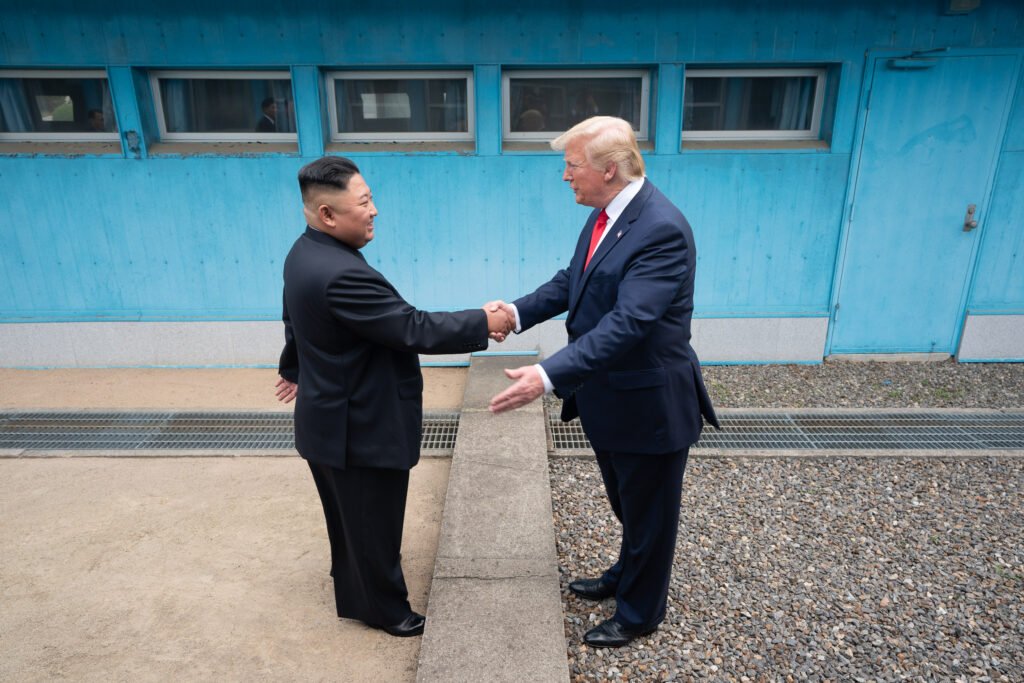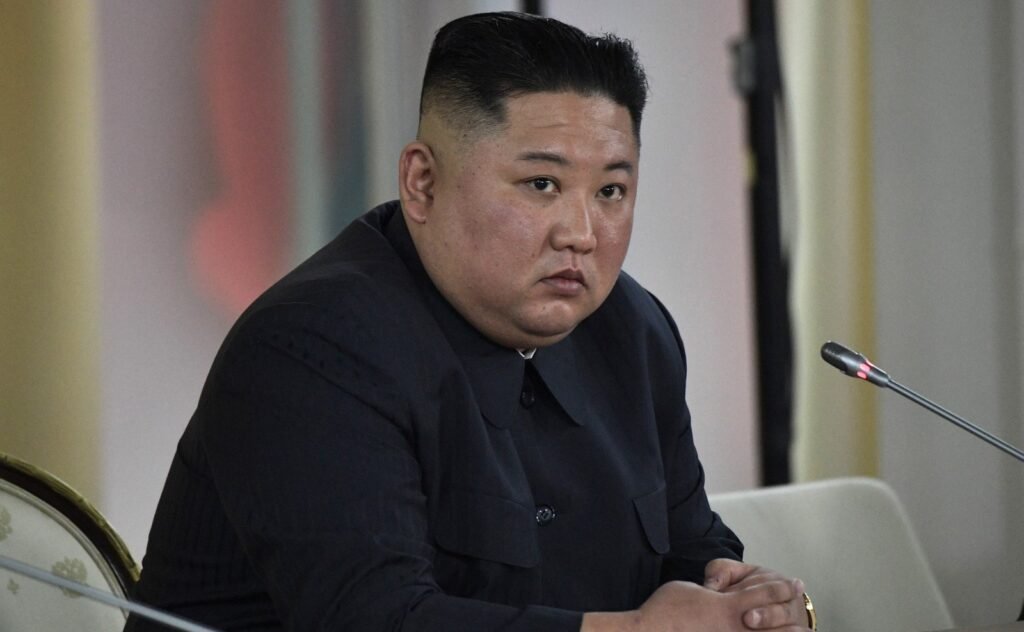World News
Deadly Ukrainian missile attack damages ships, leaves Russian shipyard ablaze: Live updates on September 13, 2023 at 4:13 pm

The Ukrainian attack on a Russian shipyard also killed 2 people and halted traffic on the Kerch Strait bridge that links Crimea with Russia.
The Ukrainian attack on a Russian shipyard also killed 2 people and halted traffic on the Kerch Strait bridge that links Crimea with Russia.
News
Iran’s $40 Million Bounty on Trump Explained

The Origins of the Bounty
In July 2025, a shocking campaign emerged from Iran: a $40 million bounty was publicly placed on former U.S. President Donald Trump. This unprecedented move is rooted in escalating tensions following recent U.S. military strikes on Iranian nuclear facilities—actions reportedly authorized by Trump. The campaign was organized by a group calling itself Blood Covenant (sometimes referred to as “Blood Pact”), which has direct links to former employees of Iran’s state-run propaganda network.

The Fatwa and Religious Backing
The bounty is more than just a financial reward. It is underpinned by a fatwa—a religious edict—issued by several prominent Iranian clerics. These clerics labeled Trump an “enemy of Allah” and declared that his killing would be a religious duty for Muslims. The campaign’s website, thaar.ir, displays Quranic verses and promises not only the cash reward but also spiritual benefits, such as entry to paradise and the title of “defender of Islam,” to anyone who carries out the act.
How the Fundraising Works
- Crowdfunding Platform: The campaign is run through an Iranian website, thaar.ir, which claims to have raised over $40 million for the bounty. The site features images of Trump in crosshairs and calls for “retribution against those who mock and threaten the Supreme Leader Ali Khamenei”.
- Religious Messaging: The platform invokes religious language, urging believers to “strive with your wealth and your lives in the cause of Allah,” making the campaign a call to jihad.
- Broad Support: Analysts note that this campaign reflects a wide consensus among Iranian religious and governmental authorities, with the message amplified across Iranian media and society.
Key Figures and Organizations
- Hossein Abbasifar: Investigations have identified Hossein Abbasifar, a former employee of Islamic Republic of Iran Broadcasting (IRIB), as a key figure behind the campaign. Metadata from the website links him to the project, potentially exposing him to international sanctions.
- Blood Covenant: The group organizing the campaign operates “under the aegis of the Iranian regime,” according to the Middle East Media Research Institute (MEMRI), suggesting at least tacit approval from powerful factions within Iran.

Government Response and Denials
While the campaign has been widely promoted in Iranian media and by clerics, Iran’s President Masoud Pezeshkian has publicly distanced his government from the bounty and the fatwas, stating that such religious decrees have “nothing to do with the Iranian government or the Supreme Leader.” However, state-affiliated media and hardline clerics continue to endorse the campaign, emphasizing the religious justification for targeting Trump.
U.S. and International Reaction
- Security Concerns: U.S. authorities remain on high alert, given Iran’s history of plotting attacks on American leaders. The State Department has indicated it is using all available tools, including sanctions, to hold those responsible accountable4.
- Trump’s Response: Trump himself has publicly downplayed the threats, responding with characteristic humor when asked about warnings that he could be targeted by a drone while at his Mar-a-Lago estate89.
The Bigger Picture
The $40 million bounty on Trump is a stark reminder of the enduring animosity between the U.S. and Iran, especially in the wake of military escalations and the 2020 killing of Iranian General Qassem Soleimani. The campaign is notable for:
- Its scale and publicity, leveraging modern crowdfunding techniques.
- The fusion of religious and political motives, making the threat both ideological and material.
- The potential for escalation, as hardline elements within Iran continue to push for retribution.
Conclusion
Iran’s $40 million bounty on Donald Trump is a chilling development at the intersection of geopolitics, religion, and digital mobilization. While the actual funds raised remain difficult to independently verify, the campaign’s existence—and the broad support it appears to enjoy among certain Iranian factions—underscores the volatility of U.S.-Iran relations and the enduring risks faced by high-profile political figures.
Politics
Will Kim Ju Ae Become North Korea’s First Female Leader?

A New Face of Power in Pyongyang
In a country defined by secrecy and dynastic rule, the recent emergence of Kim Ju Ae—the daughter of North Korean leader Kim Jong Un—on the national and international stage has sparked intense speculation about the future of the world’s most isolated regime. For the first time since North Korea’s founding in 1948, the possibility of a female leader is being openly discussed, as state media and public ceremonies increasingly feature the teenage girl at her father’s side.

Kim Ju Ae’s Rise to Prominence
Kim Ju Ae, believed to be around 12 or 13 years old, first came to the world’s attention in 2013 when former NBA star Dennis Rodman revealed he had held Kim Jong Un’s daughter during a visit to Pyongyang. However, she remained out of the public eye until November 2022, when she appeared beside her father at the launch of an intercontinental ballistic missile—a powerful symbol in North Korean propaganda.

Since then, Ju Ae has become a regular fixture at high-profile events, from military parades and weapons launches to the grand opening of a water park and the unveiling of new naval ships. Her repeated appearances are unprecedented for a member of the Kim family so young, especially a girl, and have led South Korean intelligence officials to suggest she is being groomed as her father’s successor.
The Power of Propaganda
North Korea’s state media has shifted its language regarding Ju Ae, referring to her as “beloved” and, more recently, “respected”—a term previously reserved for the nation’s highest dignitaries. Analysts believe this is part of a carefully orchestrated campaign to build her public profile and legitimize her as a future leader, signaling continuity and stability for the regime.

Presenting Ju Ae as the face of the next generation serves several purposes:
- Demonstrating dynastic continuity: By showcasing his daughter, Kim Jong Un assures elites and the public that the Kim family’s grip on power will persist.
- Minimizing internal threats: A young female successor is less likely to attract rival factions or pose an immediate threat to the current leadership.
- Projecting a modern image: Her presence at both military and civilian events signals adaptability and a potential shift in North Korea’s traditionally patriarchal leadership structure.

Breaking with Tradition?
If Ju Ae is indeed being positioned as the next leader, it would mark a historic break from North Korea’s deeply patriarchal system. The country has never had a female ruler, and its military and political elite remain overwhelmingly male. However, her growing public profile and the respect shown to her by senior officials suggest that the regime is preparing the nation for the possibility of her ascension.
The only other woman with significant visibility and influence in the regime is Kim Yo Jong, Kim Jong Un’s younger sister, who has become a powerful figure in her own right, especially in matters of propaganda and foreign policy.
A Nation Divided, a Dynasty Endures
While the Kim family’s hold on North Korea appears unshakable, the country remains divided from South Korea by a heavily militarized border. Many families have been separated for generations, with little hope for reunification in the near future. As the Kim dynasty prepares its next generation for leadership, the longing for family reunions and peace persists on both sides of the border.
The Road Ahead
Kim Ju Ae’s future remains shrouded in mystery, much like the country she may one day lead. Her carefully managed public appearances, the reverence shown by state media, and her father’s apparent efforts to secure her place in the succession line all point to a regime intent on preserving its legacy while adapting to new realities. Whether North Korea is truly ready for its first female leader is uncertain, but the groundwork is clearly being laid for a new chapter in the Kim dynasty.
Business
Pros and Cons of the Big Beautiful Bill

The “Big Beautiful Bill” (officially the One Big Beautiful Bill Act) is a sweeping tax and spending package passed in July 2025. It makes permanent many Trump-era tax cuts, introduces new tax breaks for working Americans, and enacts deep cuts to federal safety-net programs. The bill also increases spending on border security and defense, while rolling back clean energy incentives and tightening requirements for social programs.

Pros
1. Tax Relief for Middle and Working-Class Families
- Makes the 2017 Trump tax cuts permanent, preventing a scheduled tax hike for many Americans.
- Introduces new tax breaks: no federal income tax on tips and overtime pay (for incomes under $150,000, with limits).
- Doubles the Child Tax Credit to $2,500 per child through 2028.
- Temporarily raises the SALT (state and local tax) deduction cap to $40,000.
- Creates “Trump Accounts”: tax-exempt savings accounts for newborns.
2. Support for Small Businesses and Economic Growth
- Makes the small business deduction permanent, supporting Main Street businesses.
- Expands expensing for investment in short-lived assets and domestic R&D, which is considered pro-growth.
3. Increased Spending on Security and Infrastructure
- Allocates $175 billion for border security and $160 billion for defense, the highest peacetime military budget in U.S. history.
- Provides $12.5 billion for air traffic control modernization.
4. Simplification and Fairness in the Tax Code
- Expands the Earned Income Tax Credit (EITC) and raises marginal rates on individuals earning over $400,000.
- Closes various deductions and loopholes, especially those benefiting private equity and multinational corporations.

Cons
1. Deep Cuts to Social Safety Net Programs
- Cuts Medicaid by approximately $930 billion and imposes new work requirements, which could leave millions without health insurance.
- Tightens eligibility and work requirements for SNAP (food assistance), potentially removing benefits from many low-income families.
- Rolls back student loan forgiveness and repeals Biden-era subsidies.
2. Increases the Federal Deficit
- The bill is projected to add $3.3–4 trillion to the federal deficit over 10 years.
- Critics argue that the combination of tax cuts and increased spending is fiscally irresponsible.
3. Benefits Skewed Toward the Wealthy
- The largest income gains go to affluent Americans, with top earners seeing significant after-tax increases.
- Critics describe the bill as the largest upward transfer of wealth in recent U.S. history.
4. Rollback of Clean Energy and Climate Incentives
- Eliminates tax credits for electric vehicles and solar energy by the end of 2025.
- Imposes stricter requirements for renewable energy developers, which could lead to job losses and higher electricity costs.

5. Potential Harm to Healthcare and Rural Hospitals
- Reduces funding for hospitals serving Medicaid recipients, increasing uncompensated care costs and threatening rural healthcare access.
- Tightens verification for federal premium subsidies under the Affordable Care Act, risking coverage for some middle-income Americans.
6. Public and Political Backlash
- The bill is unpopular in public polls and is seen as a political risk for its supporters.
- Critics warn it will widen the gap between rich and poor and reverse progress on alternative energy and healthcare.
Summary Table
| Pros | Cons |
|---|---|
| Permanent middle-class tax cuts | Deep Medicaid and SNAP cuts |
| No tax on tips/overtime for most workers | Millions may lose health insurance |
| Doubled Child Tax Credit | Adds $3.3–4T to deficit |
| Small business support | Benefits skewed to wealthy |
| Increased border/defense spending | Clean energy incentives eliminated |
| Simplifies some tax provisions | Threatens rural hospitals |
| Public backlash, political risk |
In summary:
The Big Beautiful Bill delivers significant tax relief and new benefits for many working and middle-class Americans, but it does so at the cost of deep cuts to social programs, a higher federal deficit, and reduced support for clean energy and healthcare. The bill is highly polarizing, with supporters touting its pro-growth and pro-family provisions, while critics warn of increased inequality and harm to vulnerable populations.

 Business2 weeks ago
Business2 weeks agoPros and Cons of the Big Beautiful Bill

 Advice3 weeks ago
Advice3 weeks agoWhat SXSW 2025 Filmmakers Want Every New Director to Know

 Film Industry4 weeks ago
Film Industry4 weeks agoFilming Yourself and Look Cinematic

 News2 weeks ago
News2 weeks agoFather Leaps Overboard to Save Daughter on Disney Dream Cruise

 Health2 weeks ago
Health2 weeks agoMcCullough Alleges Government Hid COVID Vaccine Side Effects

 Advice3 weeks ago
Advice3 weeks agoWhy 20% of Us Are Always Late

 Advice3 weeks ago
Advice3 weeks agoHow to Find Your Voice as a Filmmaker

 Entertainment2 weeks ago
Entertainment2 weeks agoJuror 25’s Behavior Sparks Debate Over Fairness in High-Profile Diddy Trial





























